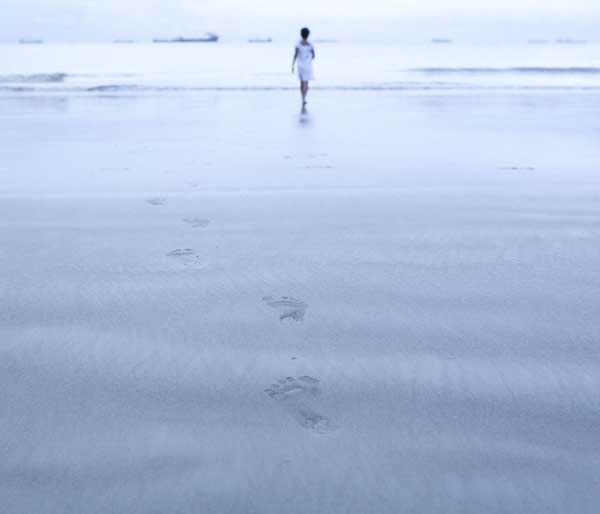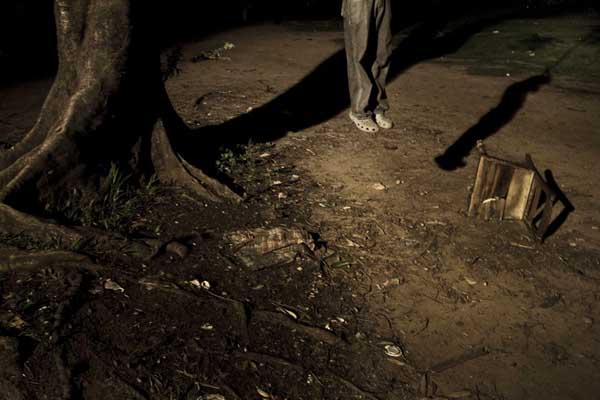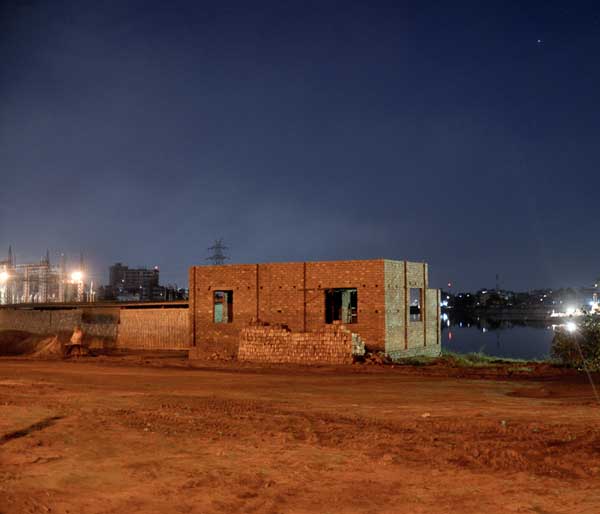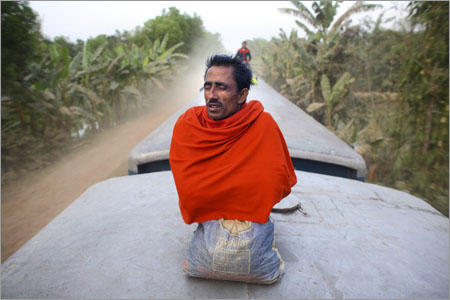Does a photograph speak for itself ? A photograph is different from an ordinary object because it is about something. Because it is about something, it requires interpretation to function as a photograph or as an artwork. One of the best ways to appreciate an image is to observe, think and talk about it. Interpretation is central to looking at all images, historical and contemporary, those we call ‘fine art’ as well as those daily seen in visual culture. Photographs provide insight, information and knowledge only if we interpret them.
5 PM – 7 PM
Thursday, 11th August 2011
The Bakery Cafe, Sundhara
About Hasib Zakaria
Hasib Zakaria is a Bangladeshi photographer who graduated from Pathshala, South Asian Media Academy in 2003. Since then, he has been lecturing at Pathshala, and is now the new vice principal. Hasib is currently a PhD candidate at Vrije University Brussels.
NayanTara Gurung
Category: Pathshala
My Journey as a Witness
Subscribe to ShahidulNews
Shahidul Alam: My Journey as a Witness
Edited by Rosa Maria Falvo
- September 23, 2011
- Hardcover
- Photography – Individual Photographer
- Skira
- 9-1/2 x 11
- $50.00
- $57.00
- 978-88-572-0966-1
About This Book
An insight into the evolution of one of the most significant movements in contemporary photography, through the eyes and voice of the man who shaped it. An extraordinary artist, Shahidul Alam is a photographer, writer, activist, and social entrepreneur who used his art to chronicle the social and artistic struggles in a country known largely for poverty and disasters.
Lucid and personal, this much-awaited book includes over 100 photographs tracing Alam?s artistic career, activism, and the founding of photography organizations. From early images shot in England to photographs of the last two decades in his native Bangladesh, this is a journey from photojournalism into social justice. Alam?s superb imagery is matched by his perceptive accounts, at once deeply intimate and bitingly satirical.
About the Author
Shahidul Alam, profoundly influenced by inequality in his native Bangladesh and The Liberation War, pursued a life in photography to challenge oppression and imperialism in all its forms. Attacked, arrested, and threatened with death, Alam built what many consider to be the finest photography school in the world, an award-winning agency, and the world?s most diverse photography festival. Widely celebrated, Alam claims as his achievements not the awards and exhibitions but the people he has trained and the lives he has transformed.?Rosa Maria Falvo is a writer and curator, and Skira?s international commissions editor, specializing in Asian contemporary art.
Introductions by:
Sebasti?o Salgado
Shahidul has managed to create a community, giving it a framework and creating links, as he has already done in Bangladesh. This is not merely another virtual community, like so many others, which have undoubtedly demonstrated their utility, but a truly concrete ensemble, which is a composite of all generations attached to their native soil, who share a much vaster territory than that of any one country. The territory I speak of is, of course, the photographic world of Shahidul Alam, which is also mine, as well as each and every one of ours. A world where we can daily sense our conscience and our faith in our planet.
and
Raghu Rai
In India we have many more photographers, some of them very good, and there are many galleries for art and especially photography. As well as reputed newspapers and magazines ? much is happening on many levels. But we don?t have a Shahidul Alam, who can combine them into a cohesive social and creative force.
The book was launched in Dhaka on the 23rd September 2011
The touring version on the exhibition will open at the Wilmotte Gallery (formerly Patrick Litchfield’s studio) in London on the 6th October 2011
The London launch (Grand Hyatt Churchill) will take place on the 10th October 2011
The New Delhi launch (Habitat Centre) will take place on the 15th October 2011
The New York launch (Rizolli Book Store) is on the 10th November 2011
A trailer for the book:
Beyond Walls Outside Frames
Subscribe to ShahidulNews
![]()
A photographer is rarely a good editor of one?s own photographs. It?s not as illogical as it sounds. The visual content within the four corners of a frame create the stimulus that inform us of what was seen, and in well crafted images, conjure up the sense of the moment. For the photographer, it is a small part of the process. The pain, the pleasure, the frustrations, the high, of arriving at the photograph, is an inseparable part of the image. The editorial choice therefore, cannot be made on the image alone. The emotional weight impinges upon one?s judgment. It is a valid choice, but one that the viewer unencumbered by that weight, is incapable of sharing, and hence a choice, less relevant to the viewer.

A teacher in selecting work by students goes through a similar process. The path is neither smooth nor predictable. Students with different ability, drive, tenacity and energy occupy a classroom. Work produced by a student one has nurtured over years is difficult to reduce to a set of visual frames. The coaxing, cajoling, willing and hand holding that has gone into each student. The stance one has taken, stern but generous, appreciative but demanding, kind but rigorous, finds its way into each image. Each portfolio has a stamp, invisible to others but clearly present to the teacher. How then does one take a dispassionate view, while selecting work for a collective publication?
Of course there is the chronology that maps out the growth of the organisation. The transitions that have taken place, contoured by collective experiences. The visiting faculties who have left lingering traces upon individual styles. Influences that have sometimes dramatically altered the visual practice. Return to familiar paths. Explorations into the unknown. Blatant copies arising out of adulation. Rejection, rethinking, a process of morphing where the old and the new have combined to produce a new genre altogether, are easy to observe. The branches can be traced to the roots with every knurled knot, every fork, every green shoot a sign of a new beginning.
Then comes the difficult part. When bright sparks of brilliance shine through in defiance. When a body of work refuses to be categorised. When another, just as strong, pulls in a different direction. How does one choose between favourites? How does one forget the angst that led to a new vision? When a student returns from being almost lost, and basks in new-found confidence, can work be excluded, merely because it doesn?t fit? Can brilliance be ignored merely because there are other stories to tell, and there just isn?t enough room?

Other dynamics also enter the equation. Talent and success don?t always go hand in hand. Having taught one?s students survival skills, one must appreciate their ability to get ahead, make the right impressions, learn to play the ?game?. In that game of life, there are those one admires more, for their integrity and honesty. For staying true to their beliefs. For not selling out. That the less scrupulous are sometimes the ones who shine is a reality one needs to accept. Having handed over the tools, one cannot hold back. It is arrogant to assume one?s value systems will be valued by all. In the rough and tumble of survival, many will choose options one might not fully subscribe to. Many will walk paths, one would hope they would avoid. Some will deceive, some will massage the truth. Some will benefit as a result. That too is reality.
When a reject pile is so rich with nuggets how does one lament? What message does it carry when rejection is so value loaded? When rejected work is seen as inferior. When the editors sword can affect careers, change lives. In the binary of inclusion, there is no middle path. No also-rans. Work is in, or out. The pain of losing out is not easily shared.
Hopefully, the book will speak for itself. While regretting what has been lost, one must not fail to rejoice in what is present. Inevitably there are internal references. New work that is informed by former attempts. While other bodies of work have marked the path for future students to follow. Global influences have also pitched in, but generally, it is the peers who have paved the way for future students.

The early work of Abir Abdullah, produced at a time when the genre of photo essays was largely unexplored in Bangladesh, was emulated by others in his own batch like GMB Akash. Akash himself became a trendsetter for future students. The gritty colours of Andrew Biraj and the ethereal black and whites of Munem Wasif took divergent exploratory routes while their classmate Nazrul Islam, found inroads into contemporary life in Kabul. The exquisite image construction of Saiful Huq Omi was perhaps the precursor of the equally accomplished sculptural images of Khaled Hasan. Din Mohaammad Shibly?s exploration of family life might well owe to the tender insight by Munira Morshed Munni into the intimacies of her own home. The stark rendering of the invisible gay community by Gazi Nafiz Ahmed, might have evolved from the very different approach that Akash had taken many years earlier, while Masud Alam Liton stayed closer to the early documentary style. Noor Alam?s insightful look at children with thalassaemia surely gained from the work on children with cancer by Nayemuzzaman Prince.
Choosing from the 8th batch was particularly challenging. While the individual styles of Debashish Shom, Shehab Uddin and Shumon Ahmed have all made it to the book, the ones left out include important work by Chandan Robert Rozario, the strong graphic imagery of K M Asad, the harrowing story by Saikat Majumder and the exquisite well-crafted frames of Khaled Hasan. The distinctive approaches of Tanvir-ul-Hossain and Nurun Nahar Nargish, could have represented the new contemporary movement in Bangladeshi photography. They too got bypassed because more thought provoking work was on offer.

Taslima Akhter brings us face to face with the inequalities of class that fuel our growing economy, but lost were Ashraful Awal Mishuk?s insights into the Bangladeshi underworld. Giving up Syed Asif Mahmud?s dreamy visuals was particularly heart wrenching. The well executed night scenes by Sarker Protick fought its way in, but it was the joy of seeing exciting, vibrant, exploratory work by the young photographers, Arifur Rahman, Rasel Chowdhury, Tushikur Rahman and Jannatul Mawa that got the adrenaline going. They refuse to be hemmed in by the four corners of a frame. They reject the notion of walls. This is Pathshala and Bangladeshi photography shamelessly showing off. Long may it do so.
Pathshala excels in Sony World Photography Awards
Subscribe to ShahidulNews
Tushikur Rahman and GMB Akash shortlisted in prestigious photo contest.
Tushikur Rahman, a second year student of the three year BA programme in photography at Pathshala South Asian Media Academy, was yesterday announced as one of the 10 photographers from across the world who have been short listed for the 2011 Sony World Photography Awards Student Focus competition.
Tushikur’s short listed images have triumphed over hundreds of images entered from around the world into the world’s one of the most high profile student photography programme and award, says a press release issued from London yesterday.

Being shortlisted, Tushikur has two parts to his prize. Firstly, his image will be exhibited as part of the Sony World Photography Awards Exhibition at Somerset House in London and secondly, he will be flown to London in April to take part in the World Photography Festival London and in the final stage of the competition.
Pathshala is one of the ten academic institutions and the only one from Asia to be shortlisted.
Former student GMB Akash?s pictures of people travelling, precariously, on the roofs on trains in Bangladesh has been shortlisted in the professional section Travel category.


